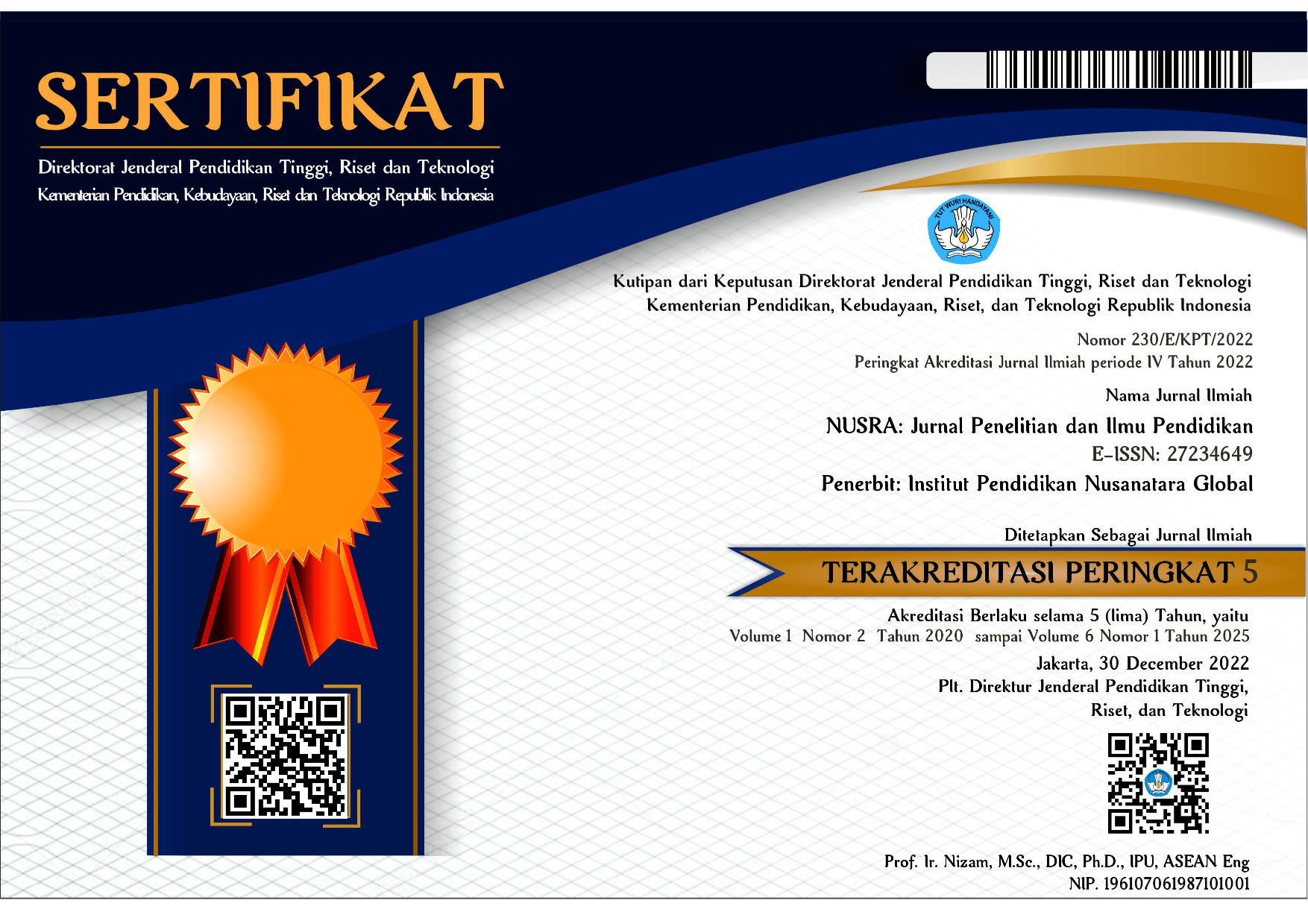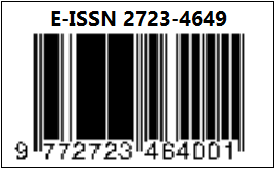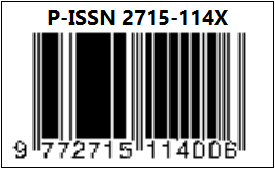Efektivitas EFEKTIVITAS MODEL PEMBELAJARAN CTL (CONTEXTUAL TEACHING AND LEARNING) TERHADAP KEMAMPUAN PEMAHAMAN KONSEP MATEMATIS SISWA KELAS VIII SMP NEGERI 3 RAKIT KULIM
DOI:
https://doi.org/10.55681/nusra.v4i2.861Keywords:
Effectiveness, CTL (Contextual Teaching and Learning), Understanding Mathematical Concept’s.Abstract
The study aims to determine the effectiveness of the CTL (Contextual Teaching and Learning) learning model on the ability to understand mathematical concepts in class VIII students of SMP Negeri 3 Rakit Kulim. This type of research is a quasi-experimental. The research design used was the Randomized Subjects Posttest Only Control Group Design. The population in this study were all students of class VIII SMP Negeri 3 Rakit Kulim. The Sampling technique is Nonprobability Sampling. Class VIII.B was selected as the experimental class and class VIII.A as control class. The data collection technique used in this study was a test of the ability to understand mathematical concepts in the form of essay questions. Data analysis techniques in this study used the Normality Test, Homogeneity Test and Hypothesis Test. Based on the result of research on the two sample classes, it was found that form the results of data analysis with the T-test, the result of Sig. < α is 0,00 < 0,05. Then the decision taken is to accept H1 and reject H0. Thus there is a significant difference between the average student learning outcomes in the experimental class using the CTL (Contextual Teaching and Learning) model which is better than the control class. So it be concluded that CTL (Sontextual Teaching and Learning) learning is effective on the ability to understand mathematical concepts in class VIII students of SMP Negeri 3 Rakit Kulim.
Downloads
References
Arif, F. (2019). Peningkatan Efektivitas Pembelajaran Melalui Peningkattan Kompetensi Pedagogik dan tteamwork. Jurnal Manajemen Pendidikan. Vol. 7, No. 2, Hal. 843-850.
Chotijah, S & Susasnto, A. (2012). Efektivitas Coontextual Teaching and Learning (CTL) dalam Meningkatkan Pemahaman Konsep Peserta Didik. Jurnal Tadris Matematika. Vol 2, n. 2, Hal. 195-206.
Fajar, A.F. (20180. Analisis Kemampuan Pemahaman Konsep matematis Siswa Kelas VIII SMP Negeri 17 Kendari. Jurnal Pendidikan Matematika, Vol. 9, N.2, Hal. 229-239.
Febriyanto, B. (2018). Peningkatan Pemahaman Konsep Matematis melalui Penggunaan Media Kantong Bergambar pada Materi Perkalian Bilangan di Kelas II Sekolah Dasar. Jurnal Cakrawala, Vol 4, Hal. 2.
Hamdayana, J. (2017). Model dan Metode Pembelajaran Kreatif dan Berkarakter. Jurnal Basicedu Vo. 1 No. 1.
Hadi, S & Kasum, M.U. (2015). Pemahaman Konsep Matematika Siswa SMP melalui Penerapan Modell Pembelajaran Koopertif Tipe Memeriksa Berpasangan (Pair Checks). Jurnal Pendidikan matematika,
Hasibuan, I. (2014). Model Pembelajaran CTL (Contextual Teaching and Learning). Jurnal Logaritma. Vol. 2 No. 1.
Mustafa, S. (2021). Pembelajaran Tatap Muka (PTM) pada Masa Pandemi covid-19 di SMA. Jakarta Selatan: Direktorat SMA, Kemendikbud.
Nurdyansyyah & Fahyuni, E. F. (2016). Inovasi Model Pembelajaran. Sidoarjo: Nizamia Learning Center.
Priyatno, D. (2014). SPSS 22: Pengolahan Data Praktis. Yogyakarta: CV Andi Offset.
Onde, L.O & Kasih, M. (2021). Analisis Pelaksanaan Pembelajaran Tatap Muka Terbatas (TMT) di Masa New Noormal Terhadap Hasil Belajar Matematika di Sekolah Dasar. Eduktif: Jurnal Pendidikan, Vol. 3, No. 4, Hal. 4400-4406.
Ratnawulan, E & Rusdiana. (2014). Evaluasi Pembelajaran. Bandung: Pustaka Setia.
Sugiyono (2015). Metode Penelitian Kuantitatif dan Kualitatif dan R&D. Bandung: Alfabeta
Wandini, R. R. (2019). Pembelajaran Matematika untuk Calon Guru MI/SD. Medan: CV. Widya Puspita.
Wina, S. (2006). Strategi Ppembelajaran: Berorientasi Standar Pendidikan. Jakarta: Kencana Prenadamedia Group.
Downloads
Published
How to Cite
Issue
Section
License
Copyright (c) 2023 NUSRA: Jurnal Penelitian dan Ilmu Pendidikan

This work is licensed under a Creative Commons Attribution-ShareAlike 4.0 International License.














